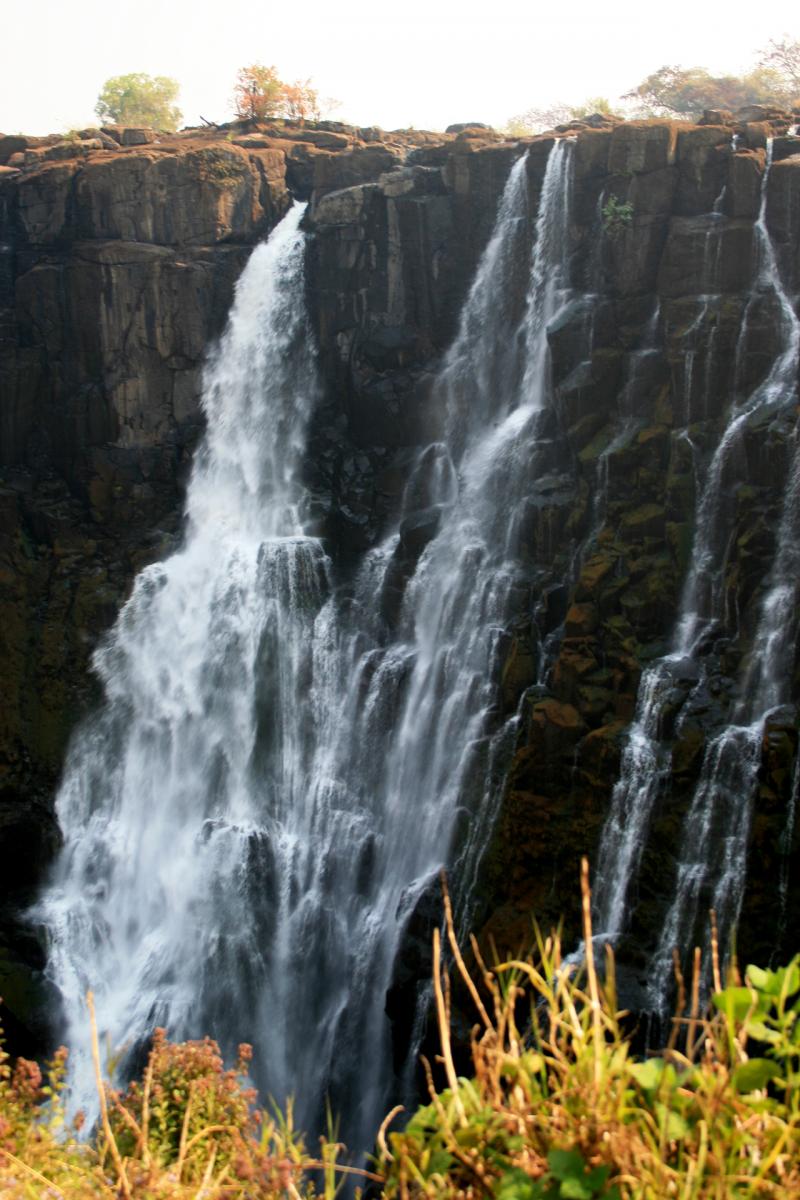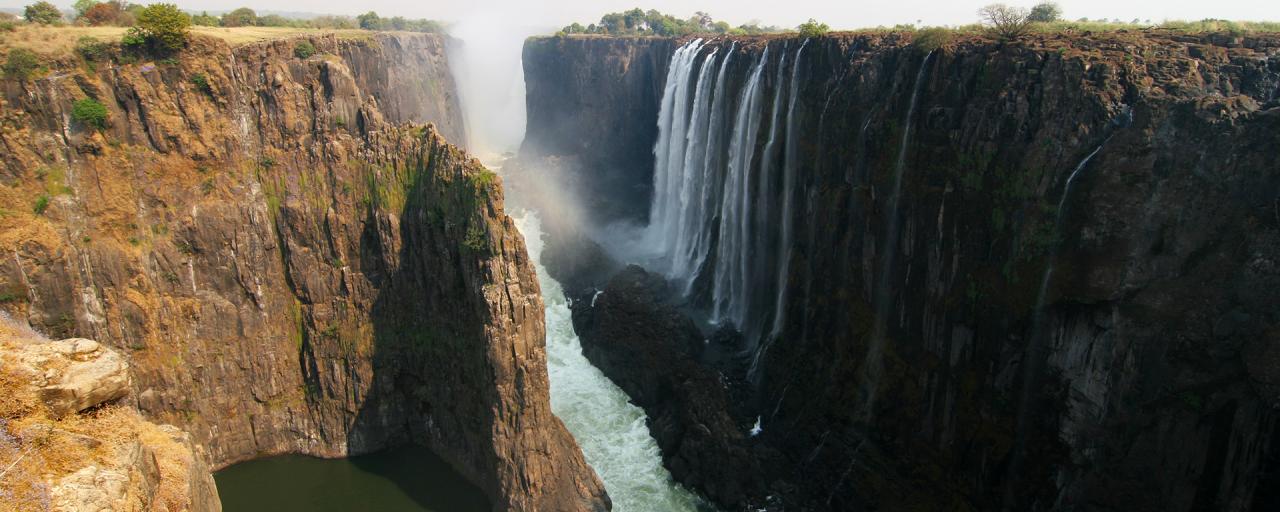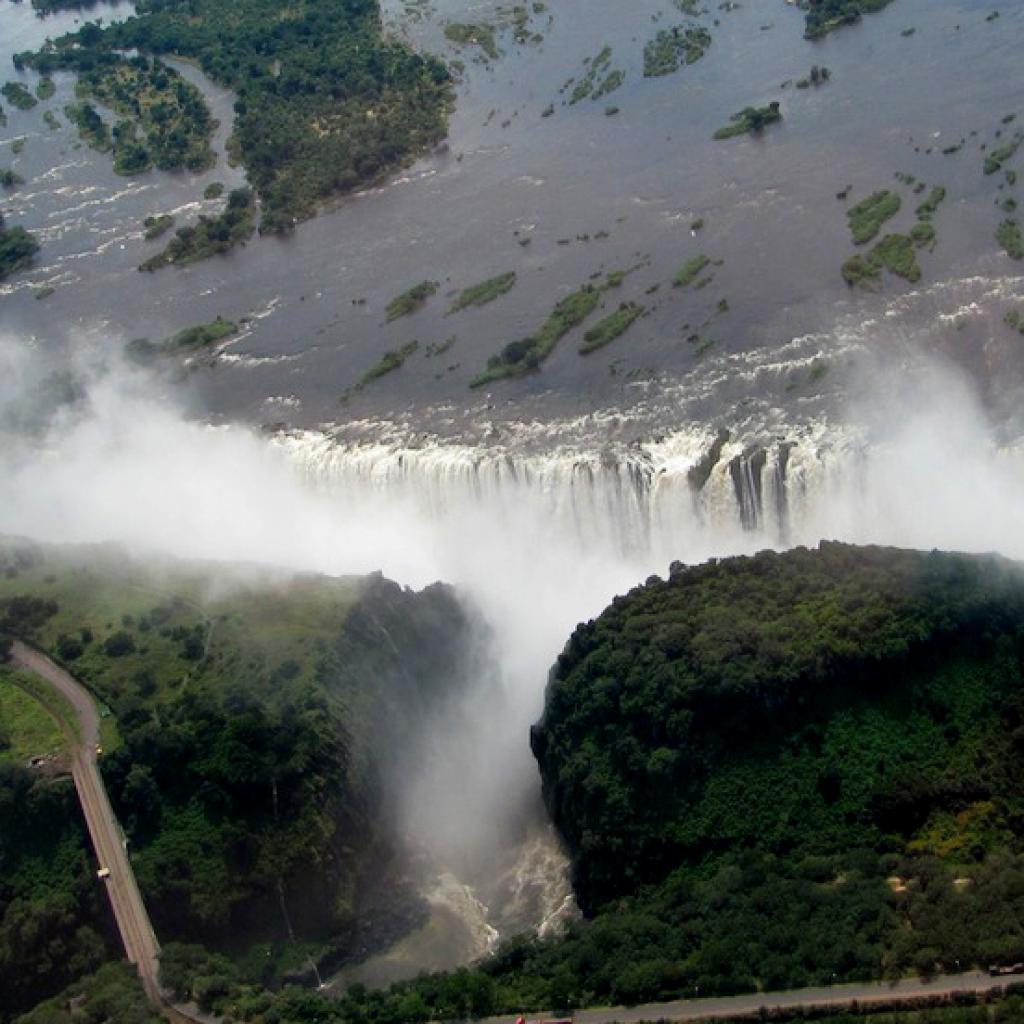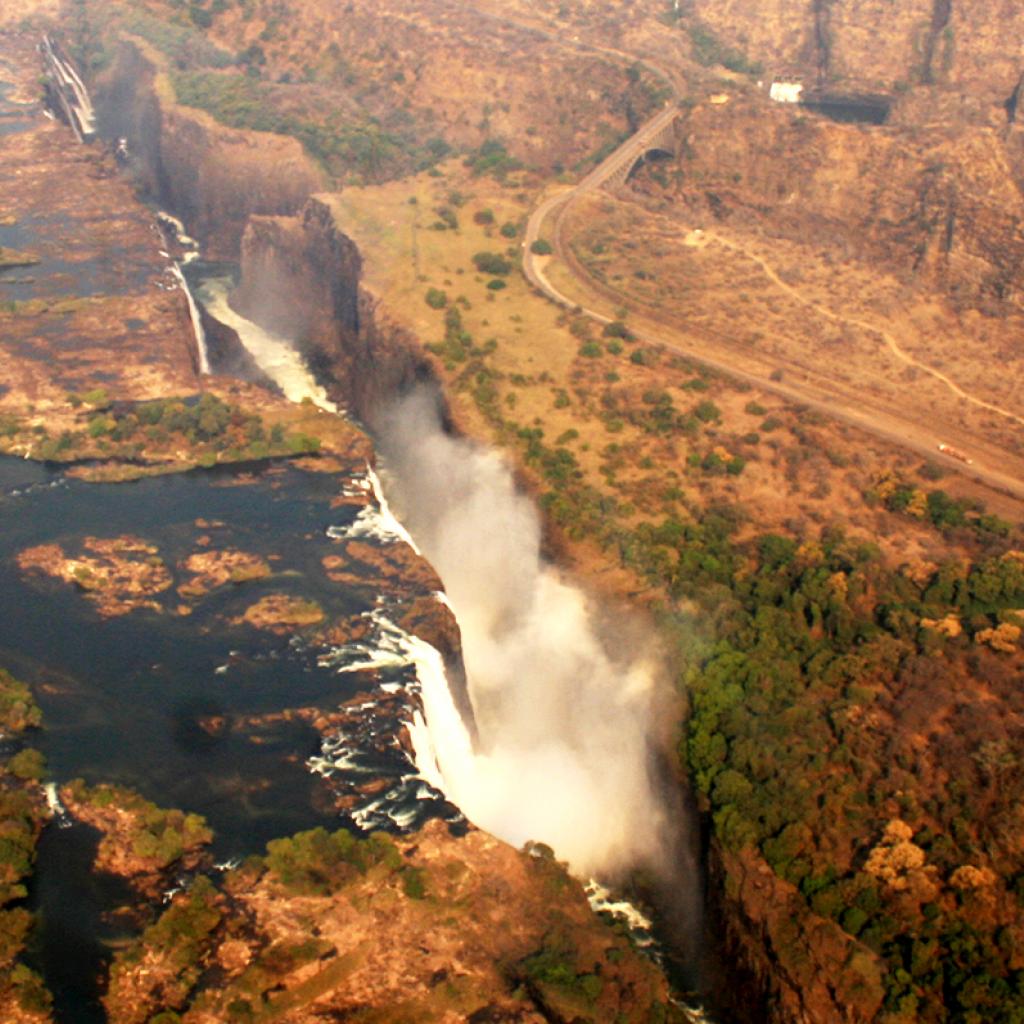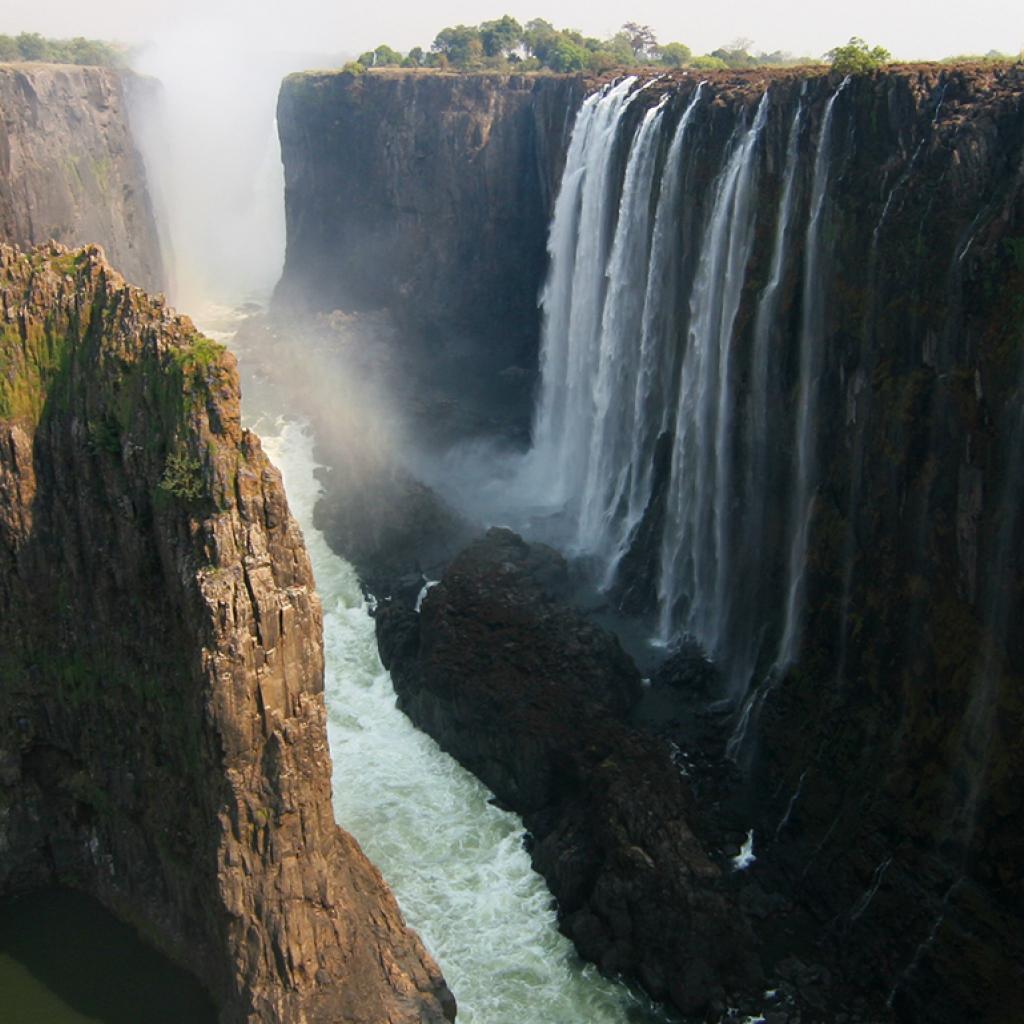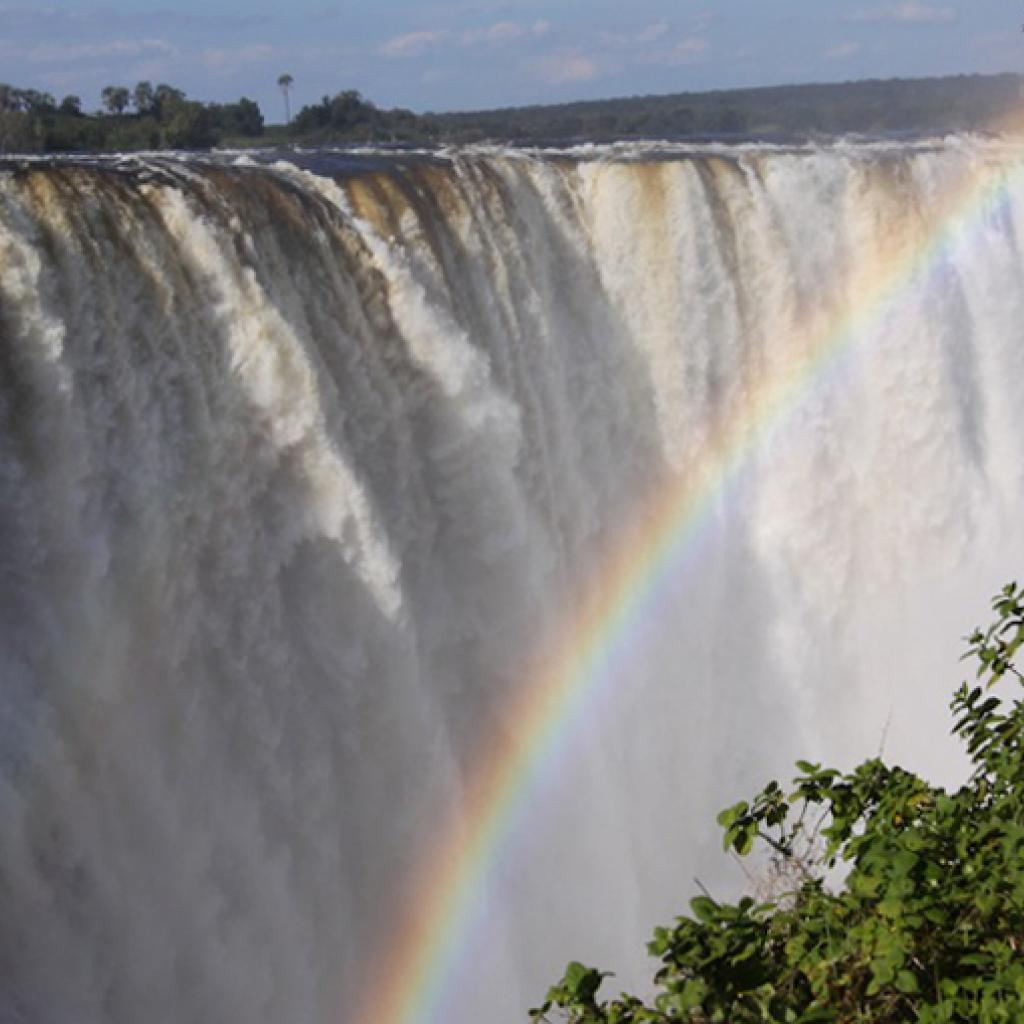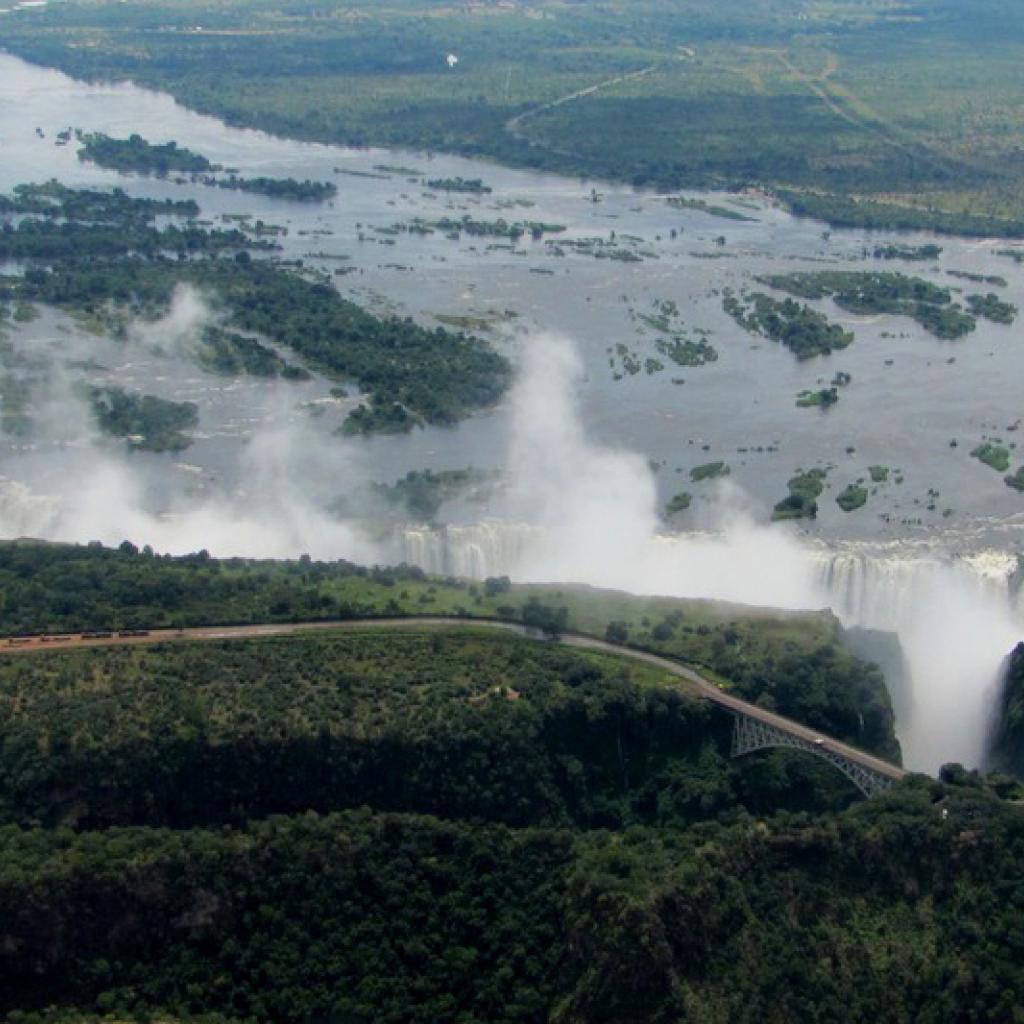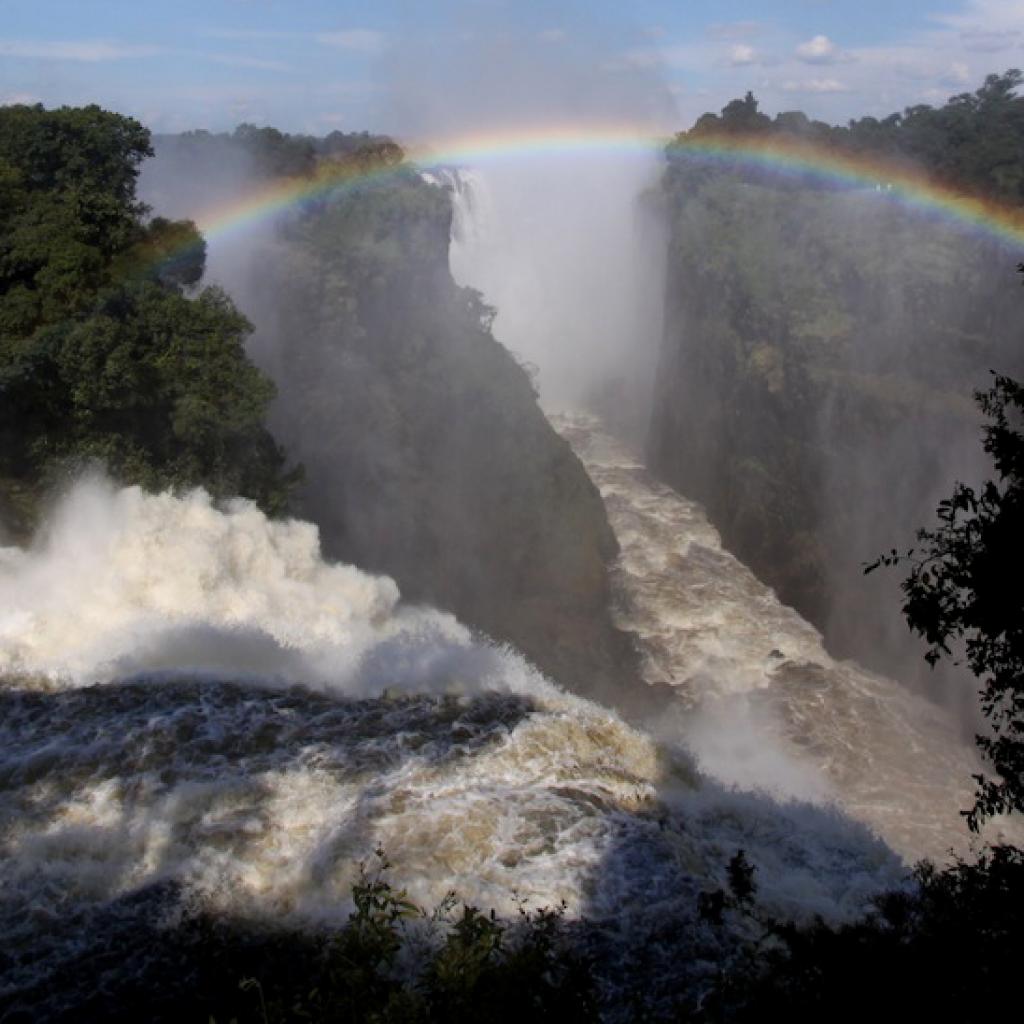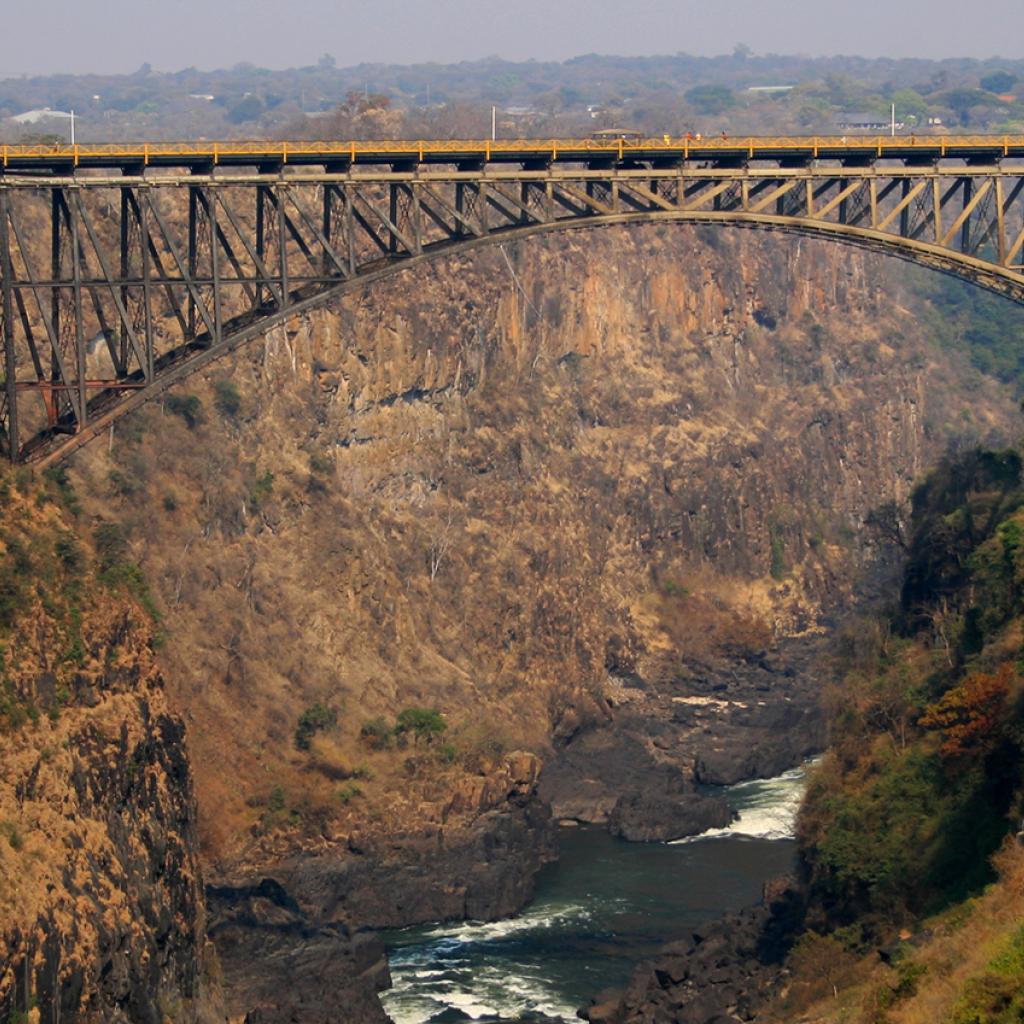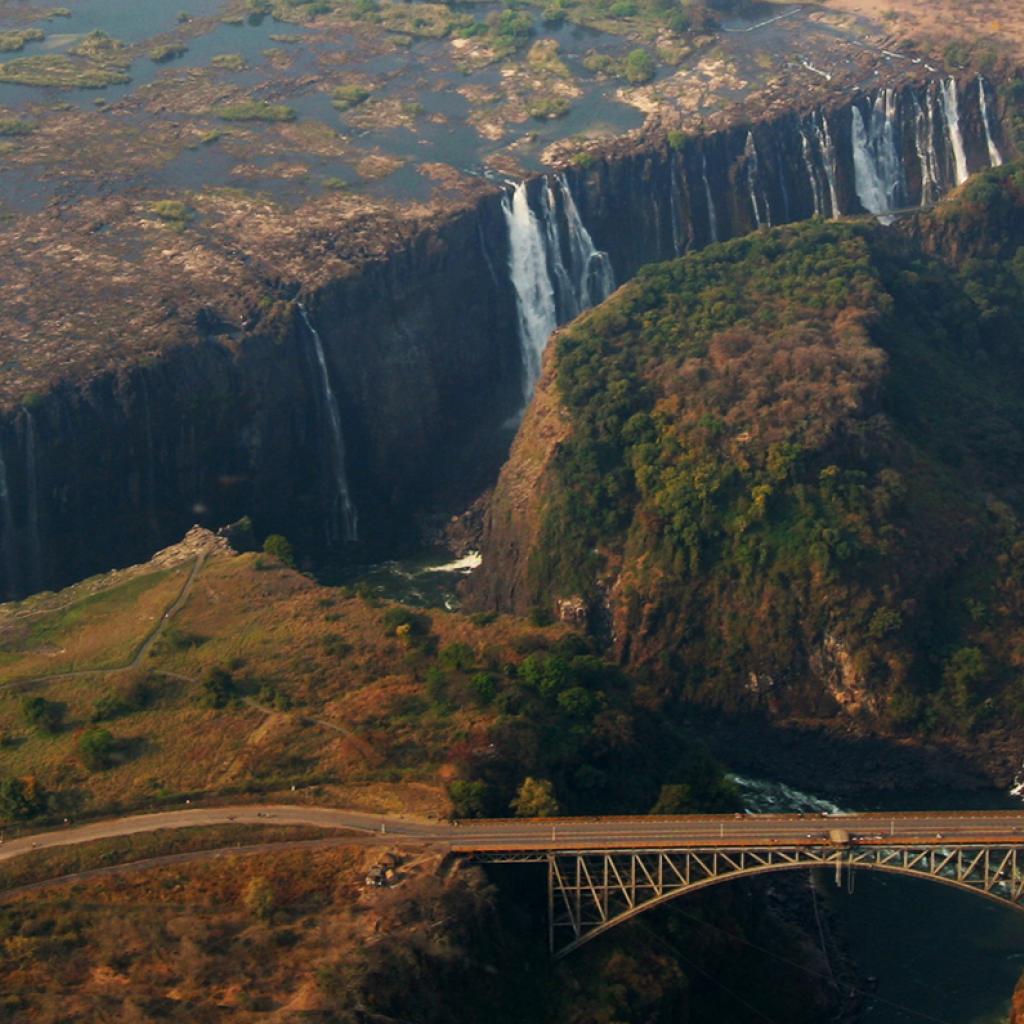The Victoria Falls are located along the Zambezi River, on the border between Zambia and Zimbabwe in Southern Africa, at an altitude of 900 m. a.s.l. and this makes the winter period cool, sometimes cold, while summer is less hot than elsewhere in the African continent.
The climate of the Victoria Falls is subtropical and has a mild and dry winter with cold nights in the months between mid-May and mid-August and a hot and rainy summer in the months from mid-November to mid-March; often rains are only short heavy showers or thunderstorms.
In the months from September to November, before the beginning of the rainy season, temperatures are high, sometimes the thermometer exceeds 40 degrees; October is the hottest month of the year.
The flow of the Zambezi River begins to rise in December and the full, up to 9,100 cubic meters per second, is recorded at the end of the rainy season from February to May and peaks in April; in this period the waterfalls pour out a considerable amount of water in the basaltic gorge, and this, if on one side prevents the gorge from appearing, on the other generates a cloud of drops of water up to 400 meters, visible from far away, up to 50 km.
It is more difficult and adventurous to visit the waterfalls because inevitably it gets wet with splashes and drops of fog, this sometimes makes it difficult to take pictures.
Since May, the flow of the Zambezi River begins to decline and the minimum rate is recorded at the end of the dry season, ie in November, about 350 cubic meters per second; from August onwards the water begins to be scarce and the Victoria Falls do not have that imposing and majestic appearance they have after rains and many islets emerge from the waters; but during this time it is possible to visit them more quietly and also you can see the rocky gorge where they are thrown from a height of over 100 meters.
Therefore, the best time to visit the Victoria Falls is from June to August, when the flow of the river is neither too much nor too small and the climate is cool and sunny; this time of the year is also the best to spot animals in the Zambezi National Park.
While from September to January, the Zambezi River records the minimum range and about half the waterfall is dry and this allows you to walk on the rocks emerging on the waterfall edge and also at the bottom of the first gorge on the Zimbabwe side.
